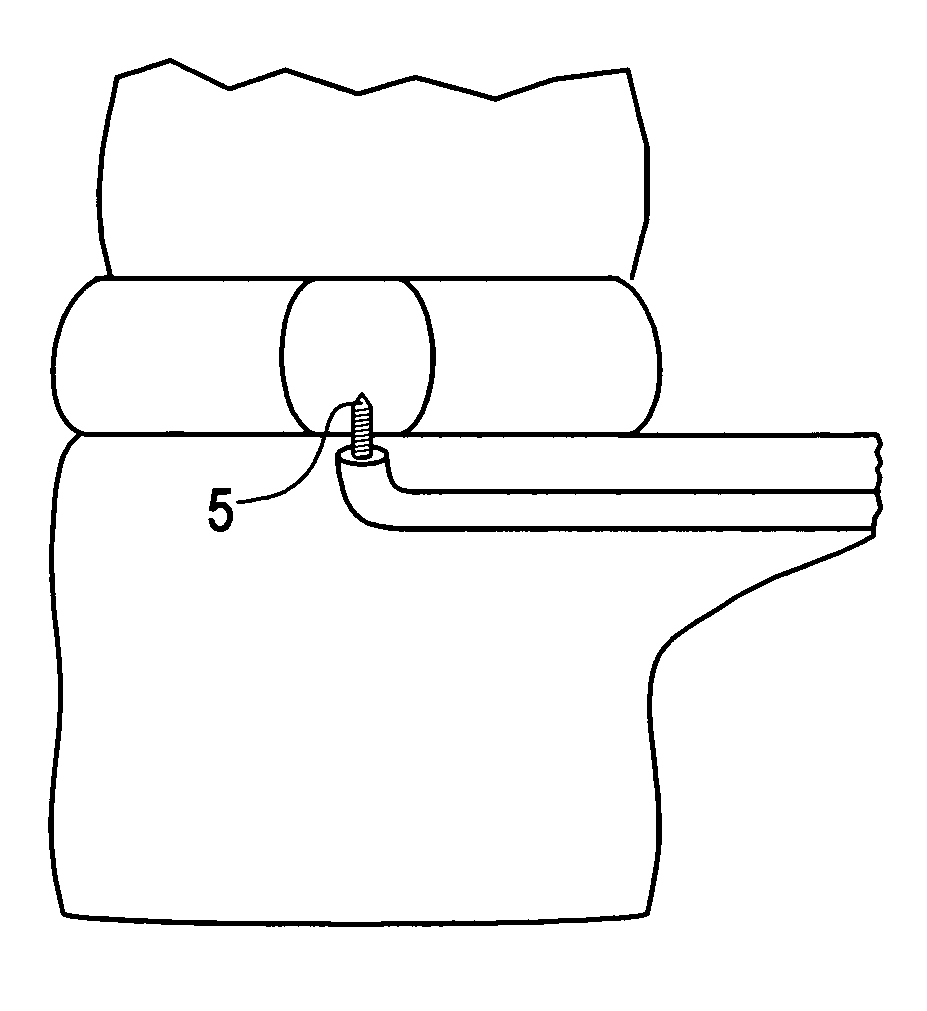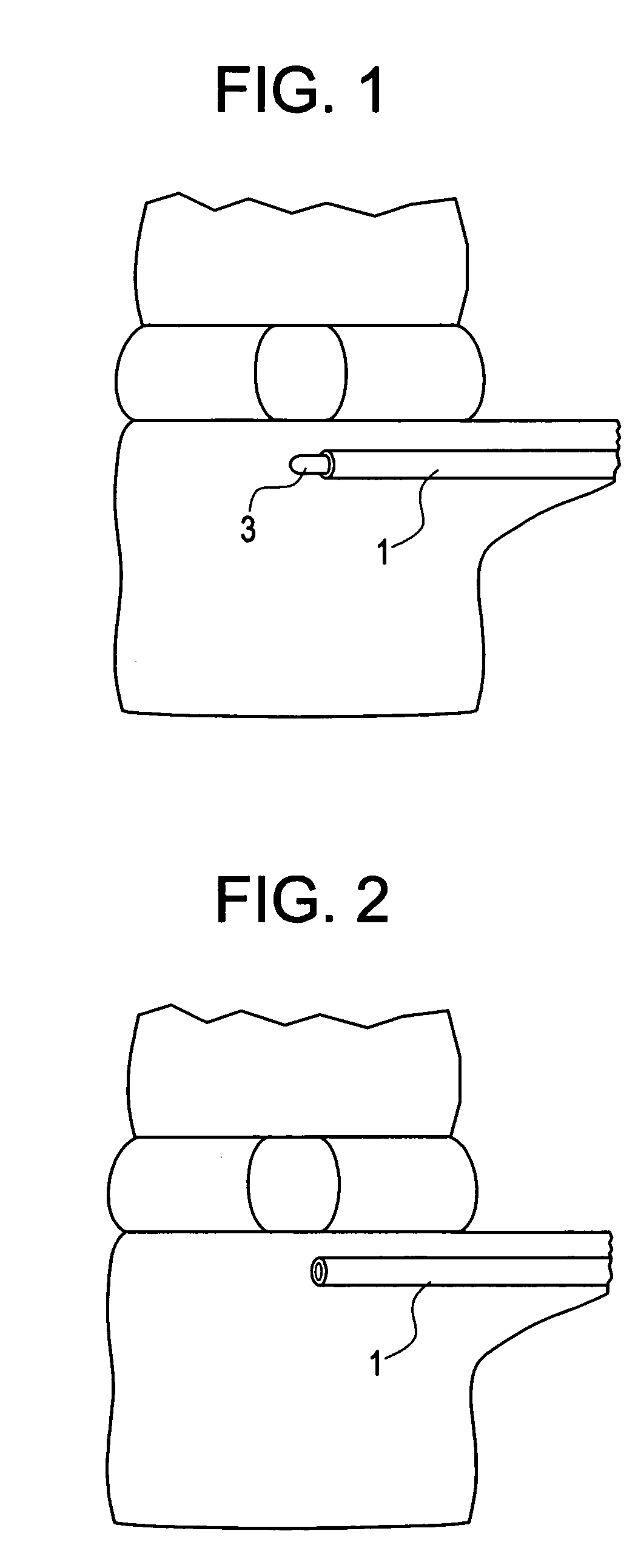Method and instruments for intervertebral disc augmentation through a pedicular approach
a pedicular approach and intervertebral disc technology, applied in the field of pedicular approach for intervertebral disc augmentation, can solve the problems of inability to repair, inability to suture the hole, and inability to repair, so as to reduce the risk of extravasation or leakage, and repair the damage to the breached vertebral endplate.
- Summary
- Abstract
- Description
- Claims
- Application Information
AI Technical Summary
Benefits of technology
Problems solved by technology
Method used
Image
Examples
example i
[0090] A patient with discogenic back pain with a black disc at L 4-5 is to be treated with disc augmentation along with a motion preserving posterior instrumentation system. The patient is prepped for a posterior approach. The pedicles are tapped at L4 and L5 to prepare for screw placement. A Nitonol tube with a harp tipped obdurator is inserted through one of the pedicle screw holes at L5 and advanced into the vertebral body. The nitinol tube system curves upwards so as to contact the endplate. The obdurator is then removed and replaced with a flexible drill to create a hole through the endplate into the disc. The drill is then removed and the disc contents are partially or fully removed by applying suction through a tip inserted through the Nitinol tube. The vacuum tip is then removed and the disc augmentation material is then inserted through the nitinol tube into the disc space. The hole in the endplate is then repaired using an in-situ settable calcium phosphate paste. The nit...
example 2
[0091] The same procedure is used as in Example 1, except that access to the disc space is also created from one of the L4 pedicle holes. This port is used to introduce a mechanical tool to help in the evacuation of the disc space. Also, this port is used to release pressure, if necessary, during the introduction of the disc augmentation material into the disc space.
example 3
[0092] A procedure substantially similar to that used in Examples 1 and 2 is used, except that posterior instrumentation is used to distract the disc prior to performing the disc evaluation and disc augmentation. The distraction is achieved by using one pedicle screw at each level, leaving the other hole accessible.
PUM
 Login to View More
Login to View More Abstract
Description
Claims
Application Information
 Login to View More
Login to View More - R&D
- Intellectual Property
- Life Sciences
- Materials
- Tech Scout
- Unparalleled Data Quality
- Higher Quality Content
- 60% Fewer Hallucinations
Browse by: Latest US Patents, China's latest patents, Technical Efficacy Thesaurus, Application Domain, Technology Topic, Popular Technical Reports.
© 2025 PatSnap. All rights reserved.Legal|Privacy policy|Modern Slavery Act Transparency Statement|Sitemap|About US| Contact US: help@patsnap.com



